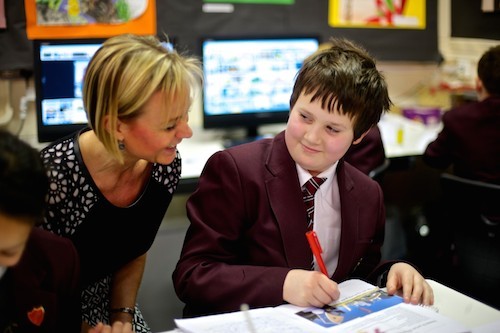
The Greater Manchester Challenge was a three-year initiative to improve the performance of over 1,000 schools, focusing in particular on students from low-income families. It led to the creation of By Schools For Schools, an agency led by successful school principals that encourages schools to cooperate in order to bring about further improvements. I interviewed school Principal Vicky Beer, who played a lead role in this important initiative to promote self-improving school systems. I also invited Mel Ainscow, Professor of Education and Co-Director of the Centre for Equity in Education at the University of Manchester, to share his perspectives. Mel’s new book, Towards Self-Improving School Systems: Lessons from a City Challenge, will be published by Routledge in Spring, 2015.
Vicky – Can you briefly describe the By Schools for Schools vision?
By Schools for Schools has a very clear underlying strategy for school improvement, which is that all of the challenges that arise in the system already have solutions that exist within the system somewhere.
The mechanism of school-to-school support is a reciprocal arrangement for school improvement. It raises educational outcomes, the degree of thinking, and quality of leadership both in the school in receipt of support and in the school giving support.
By using a range of strategies, we raise the level of thinking in schools working in partnership to raise the standard of teaching and of learning, improving outcomes and increasing opportunities for all of those whose futures are so dependent upon the public education system.
However, it is essential that schools providing support have the capacity to do so without detriment to their own quality. They must continue with their own high quality delivery themselves, retain robust models of leadership, and provide educational excellence for their students. Creating this capacity to conduct school-to-school support obviously requires funding. Some of the funding for this increased capacity comes from the schools themselves, some from grants and some from government funding.
The school-to-school support system is designed to raise standards in all schools and not to have an ebb and flow of quality. We strongly believe every child who does not receive a first class education is in receipt of a second class one and that’s not acceptable. Our moral mission is to ensure every school and therefore every child succeeds. This is our goal but we still have a long way to go on the journey.

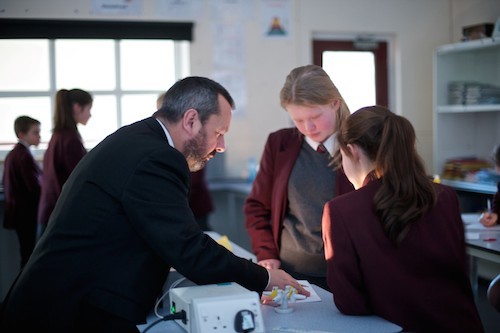
What do you believe are the characteristics of highly effective schools in UK?
Effective schools have an ability to be self-aware of their strengths, their weaknesses, the community they serve and the specific needs of their learners. They have an ability to balance these into developing a curriculum that is able to meet the needs of their learners, and are flexible in staffing, resourcing and management so they re-evaluate their needs regularly and adapt effectively to changing circumstance.
Effective schools have an uncompromising drive for standards and they recognize that their learners’ needs are the key driver in any school. They challenge underperformance. They are clear on what high expectations and high levels of progress look like in their schools. They continually seek to evaluate their work and its impact on learner outcomes in the widest sense.
Effective schools have clear vision and make all stakeholders accountable for delivering and maintaining great visions. This vision is returned to regularly, evaluated and developed. The vision is underpinned by a core set of values that all stakeholders understand, subscribe to and value.
Effective schools have clear leadership roles, accountability and systems for ensuring that all teaching is at least good, has impact and is focused on learners’ needs. These systems should fully inform self-review which in turn should clearly map out clear programs of staff development and school improvement that should be fully resourced. These schools know themselves well, they value improvement and staff development and are outward facing, working with others to challenge, self-evaluate and improve.

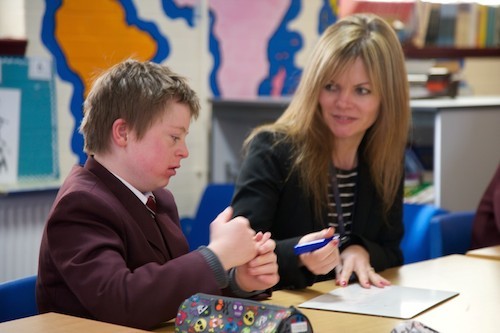
What are the key improvement steps and strategies in your model and how effective have they been?
The first step is to diagnose exactly what the issues are in the school requiring support. The next step is to identify solutions within the system to address the emergent issues. What we do not offer are off the shelf solutions such as a data pack or an assessment system. Instead we try to create bespoke solutions.
The range of strategies we use are to affect change at all levels, for example, coaching support which can be at a senior leader, middle leader or teacher level. The coaching would be delivered by an experienced practitioner who would both support and challenge staff, guiding them to reconsider and review practice and its impact. The coach would signpost models of good practice and then work with the coachee to analyze that practice based in one context to extend their thinking and develop new practice fit for their own context.
The solutions provided see clear improvements in the supported school and develop that school’s own capacity to improve so that a sustainable legacy remains, preventing the school from falling back into crisis when the support is removed.
A diagnostic, support and coaching approach is also available at governance level. This follows the same pattern and approach as the other coaching solutions.
Where a school is in crisis, we are able to broker immediate support from schools. This may include executive headship, brokering acting head teachers, providing a network to identify staff at senior and middle levels who can take on short term contracts to act in leadership roles across schools, or finding outstanding teachers to work alongside staff to improve the quality of teaching rapidly.
However, whatever strategy is deployed, growing sustainable improvement capacity in the supported school is vital to the success of the whole initiative.
How do you balance the focus on learner outcomes?
A failure to focus on learner outcomes, particularly in terms of literacy and numeracy skills, whilst focusing on more esoteric study, is far more damaging long term for both the economic and future wellbeing of students. Research shows that children with poor literacy and numeracy are far more likely to suffer economic challenges. A significant proportion of the prison population have low levels of literacy and numeracy so it is morally right to support the future success and opportunities for the learners in our care by ensuring the highest levels of academic excellence so that they have the greatest opportunity to succeed. To ensure our children have the best outcomes possible is most important. This must be a non-negotiable. However, to guarantee that outcome, processes need to adapt, change and improve to ensure the outcome is attainable.

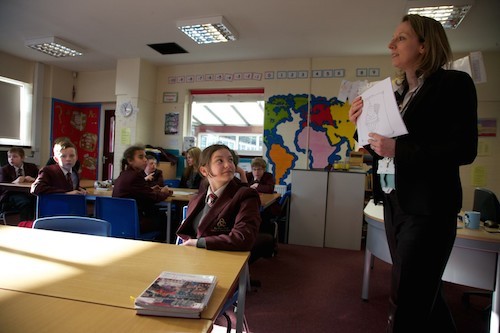
How has the evolution of technology impacted school improvement processes?
From a practitioner viewpoint, there are now better systems for data management, tracking, devolving individualized programmes of study and for holding staff and learners to account. Technological advances have enabled the world to be brought into the classroom and even onto a child’s palm at the click of a button. It makes learning engaging, fun and life-like. However, technology supports the resource because the real resource is the human with their humane communication, challenge and engagement.
Mel – What do we learn from the By Schools for Schools case study?
Over the last twenty years or so, successive British governments of different political orientations have made educational reform a priority. This has led to a plethora of centrally driven interventions. Whilst the nature of these responses has varied significantly, they tend to all start from an instinctive assumption that schools – and by implication teachers – are the main source of the problem. Consequently, massive efforts have been made to deal with these perceived deficits though a combination of top down interventions, accountability measures and changes in governance arrangements.
The approach that Vicky Beer and her colleague principals have used to create By Schools for Schools starts from a different set of assumptions. In essence, it builds on the idea that within schools and the communities they serve, there are untapped resources that can be mobilized in order to transform schools from places that do well for many children to ones that can reach out to all.
Their collaborative strategies help to foster new, more fruitful working relationships: between national and local governments; between administrators and practitioners; within and between schools; and between schools and their local communities. In this way, they have established many new pathways through which energy, expertise and lessons from innovations can spread.
(Mike Tonge, Director of By Schools for Schools, and Roy Halford, Co-Chair of By Schools for Schools, contributed to this article).


(Photos are courtesy of By Schools for Schools)
Join me and globally renowned thought leaders including Sir Michael Barber (UK), Dr. Michael Block (U.S.), Dr. Leon Botstein (U.S.), Professor Clay Christensen (U.S.), Dr. Linda Darling-Hammond (U.S.), Dr. MadhavChavan (India), Professor Michael Fullan (Canada), Professor Howard Gardner (U.S.), Professor Andy Hargreaves (U.S.), Professor Yvonne Hellman (The Netherlands), Professor Kristin Helstad (Norway), Jean Hendrickson (U.S.), Professor Rose Hipkins (New Zealand), Professor Cornelia Hoogland (Canada), Honourable Jeff Johnson (Canada), Mme. Chantal Kaufmann (Belgium), Dr. EijaKauppinen (Finland), State Secretary TapioKosunen (Finland), Professor Dominique Lafontaine (Belgium), Professor Hugh Lauder (UK), Professor Ben Levin (Canada), Lord Ken Macdonald (UK), Professor Barry McGaw (Australia), Shiv Nadar (India), Professor R. Natarajan (India), Dr. Pak Tee Ng (Singapore), Dr. Denise Pope (US), Sridhar Rajagopalan (India), Dr. Diane Ravitch (U.S.), Richard Wilson Riley (U.S.), Sir Ken Robinson (UK), Professor PasiSahlberg (Finland), Professor Manabu Sato (Japan), Andreas Schleicher (PISA, OECD), Dr. Anthony Seldon (UK), Dr. David Shaffer (U.S.), Dr. Kirsten Sivesind (Norway), Chancellor Stephen Spahn (U.S.), Yves Theze (LyceeFrancais U.S.), Professor Charles Ungerleider (Canada), Professor Tony Wagner (U.S.), Sir David Watson (UK), Professor Dylan Wiliam (UK), Dr. Mark Wormald (UK), Professor Theo Wubbels (The Netherlands), Professor Michael Young (UK), and Professor Minxuan Zhang (China) as they explore the big picture education questions that all nations face today.
The Global Search for Education Community Page
C. M. Rubin is the author of two widely read online series for which she received a 2011 Upton Sinclair award, “The Global Search for Education” and “How Will We Read?” She is also the author of three bestselling books, including The Real Alice in Wonderland, is the publisher of CMRubinWorld, and is a Disruptor Foundation Fellow.
Follow C. M. Rubin on Twitter: www.twitter.com/@cmrubinworld





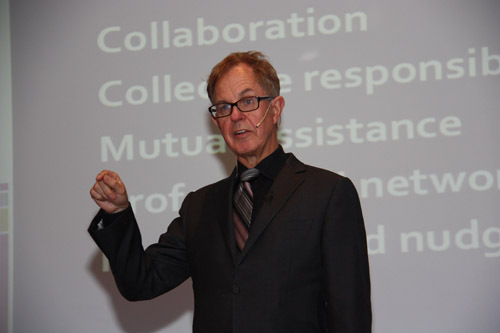
Recent Comments